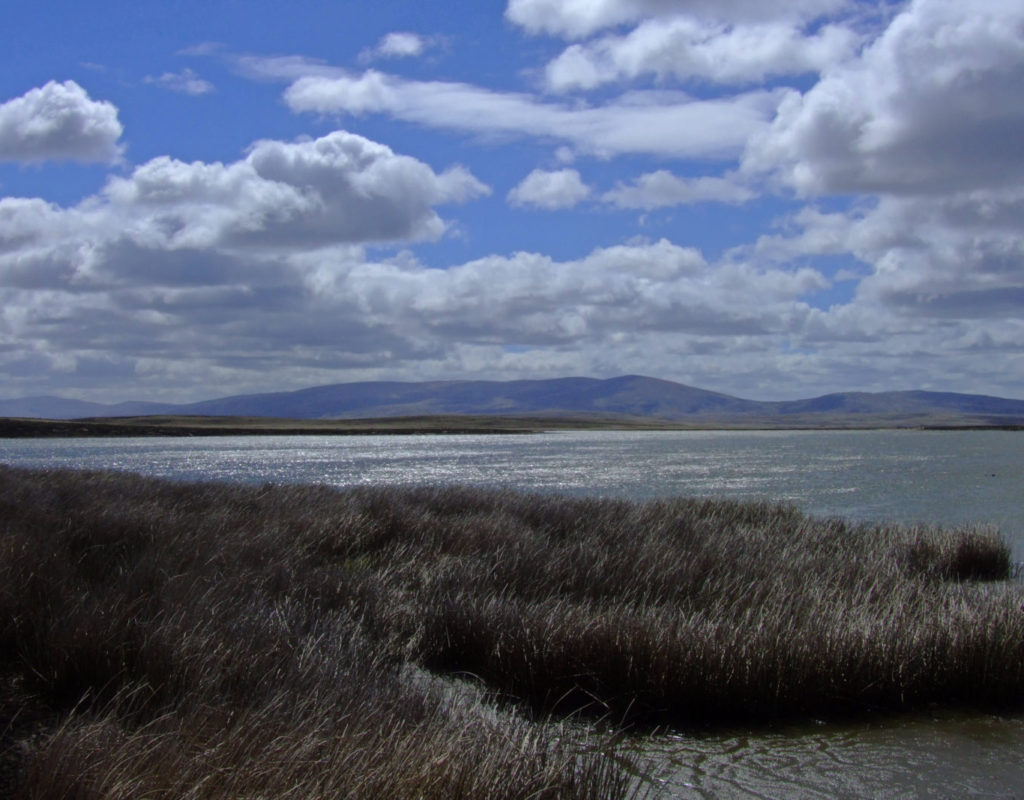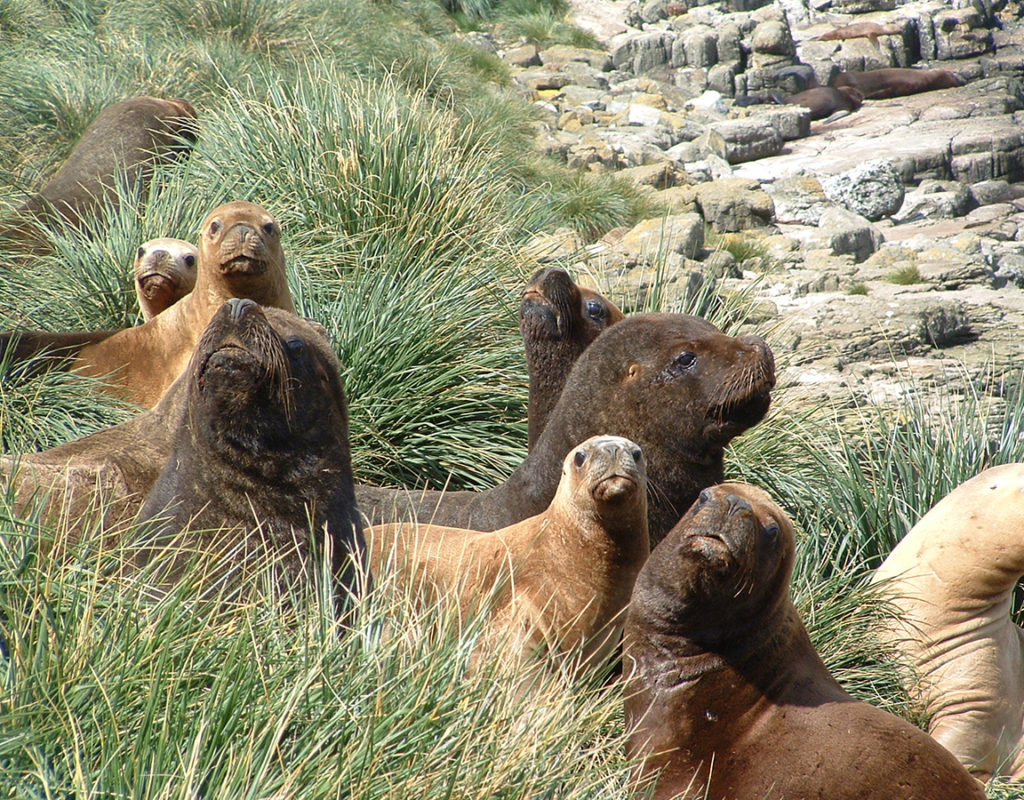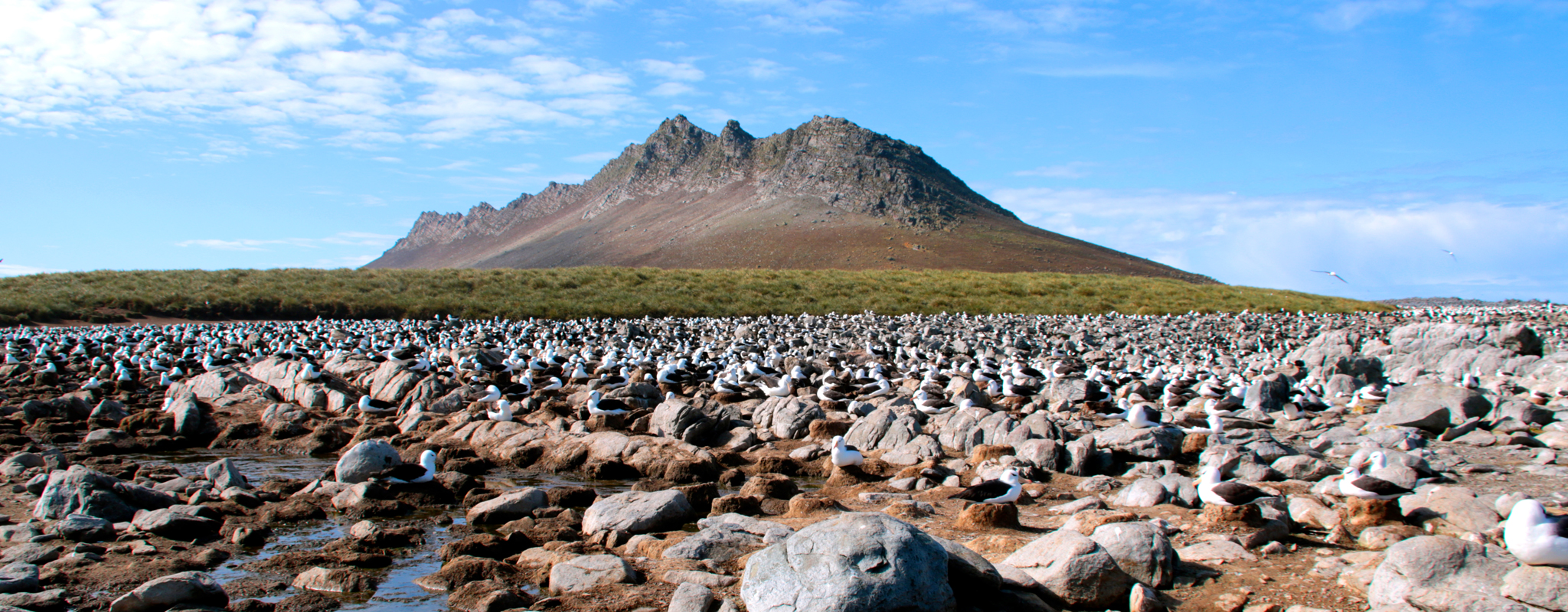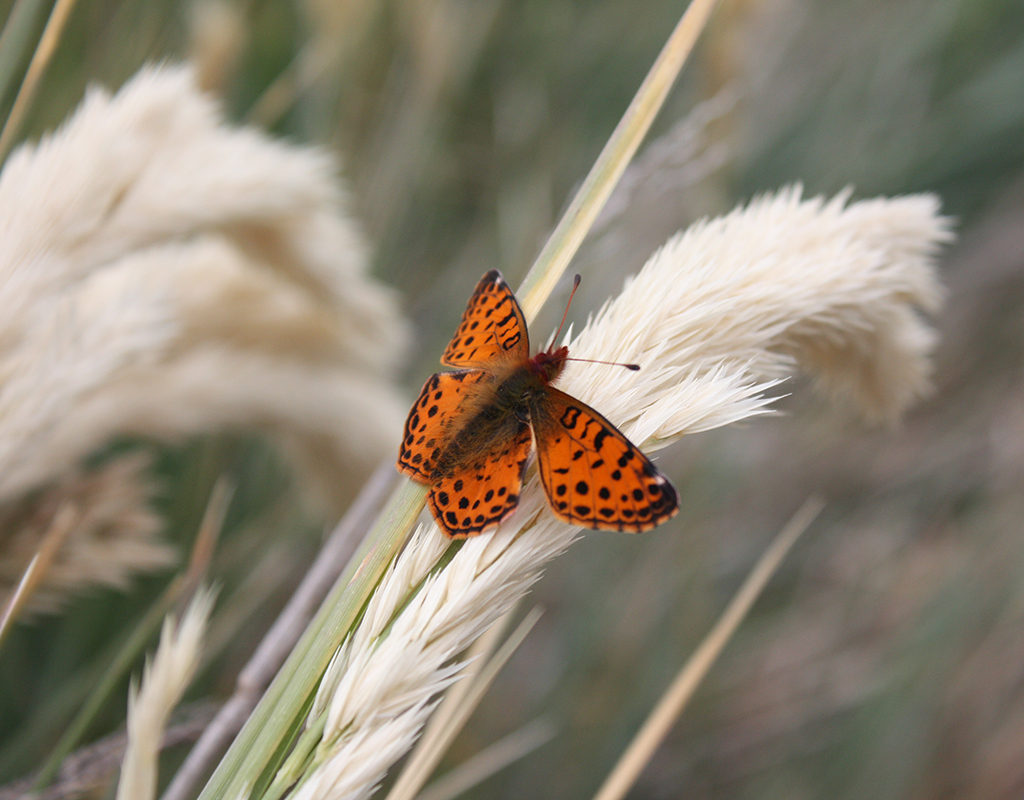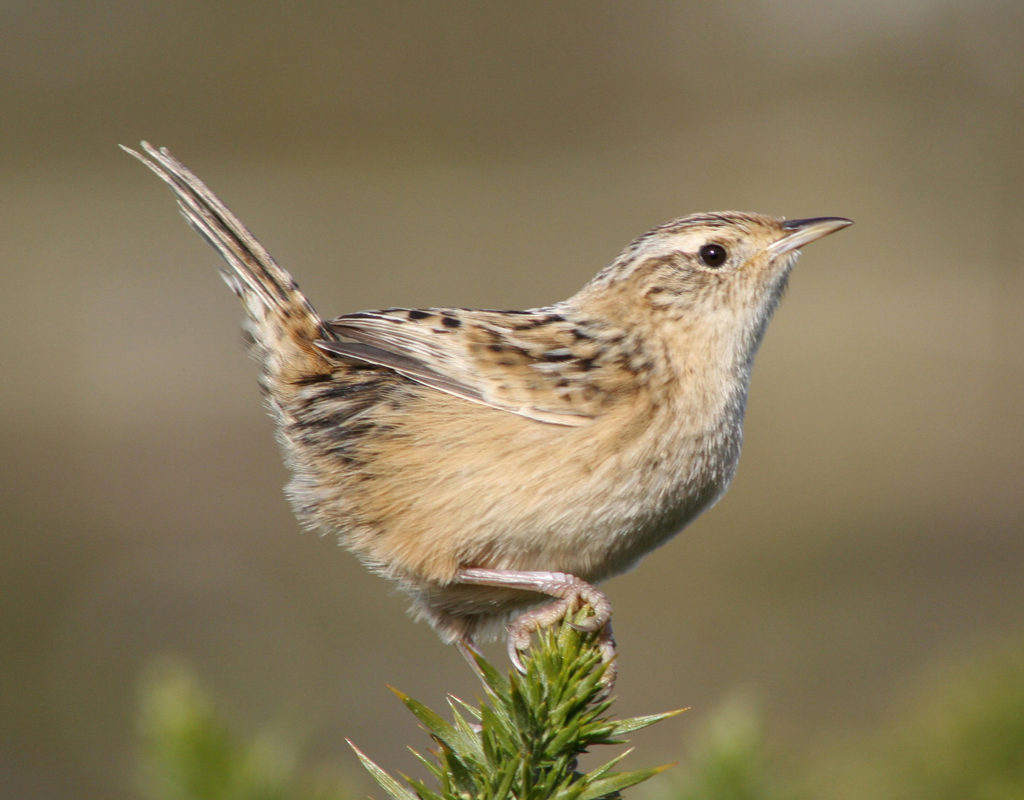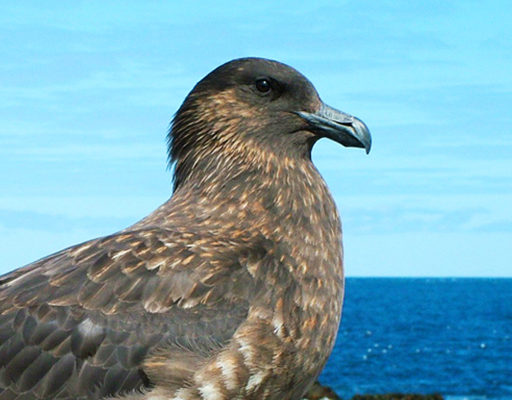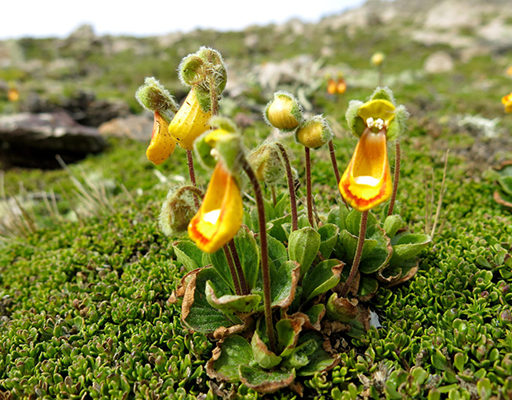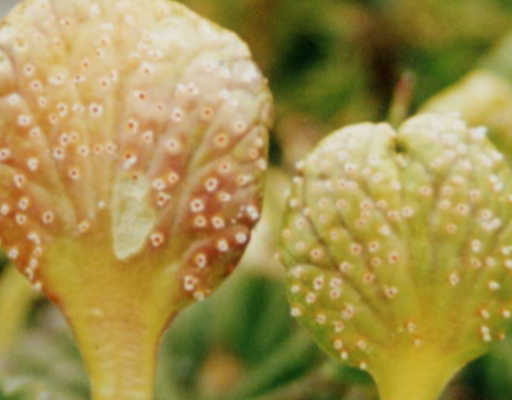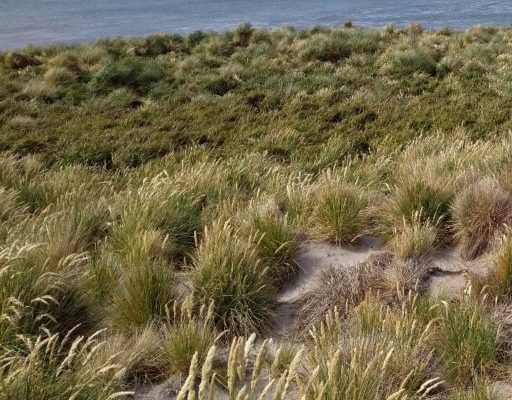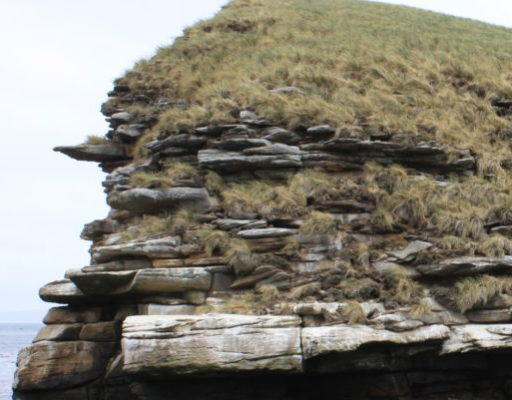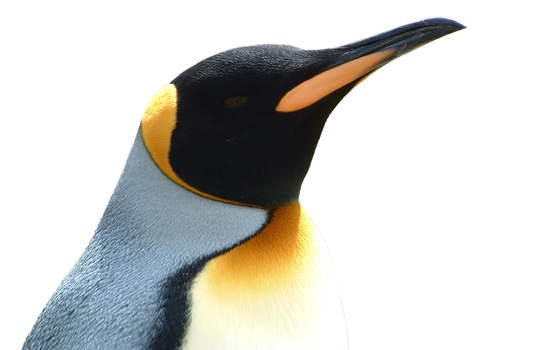The Falklands’ terrestrial biodiversity has evolved against this landscape and climatic backdrop.
Like many other sub-polar island archipelagos, this was in the absence of small mammalian predators, and with the exception of geese, no grazing animals.
An endemic wolf, the warrah, roamed the larger islands in the past, but was exterminated by arriving settlers. There has been human activity in the Islands for around 250 years, bringing with them non-native predatory and grazing mammals and introducing crops or grasses for pasture, which have heavily modified the historically lushly vegetated, yet treeless, islands.
Tussac grass, growing to 3m tall, is the forest of the Falklands storing as much carbon as temperate woodland. It is now only really found on offshore islands with dry heath and ‘whitegrass’ grassland dominating the mainland and larger islands.





